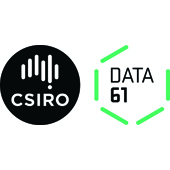

Director – commercialisation, legal and IP | CSIRO’s Data61





Rajiv Cabraal
Director – commercialisation, legal and IP | CSIRO’s Data61
Firstly, the merger of NICTA with CSIRO’s Digital Productivity Flagship to form Data61 and dealing Data61’s first years of operation as we combined two businesses, with different people cultures and operating rhythms, into a single powerhouse to drive digital and data innovation in Australia. I’ve also been involved in a number of spin-outs and licenses, which advance our technologies out of the labs and into the market. Some of these, like Bionic Vision Technologies which is developing a bionic eye to restore vision to the blind, have an incredible potential to transform people’s lives, while others like Geoslam in the space of 3D laser mapping, are fantastic examples of Australian technology being deployed on a global scale.
Ultimately, by adding value. However, it helps to have a legal team that is represented on senior management to drive candid conversations, a common understanding of how the legal team adds value to the business strategy (ie. not just back office or the compliance police), and to help avoid instances of “us business vs them legal”. The legal team needs to have a solution focussed mindset backed by strong ethics and an understanding of when to “just say no” or escalate issues, a culture which is responsive to business needs and feedback, and a culture which provokes change and constantly looks toward innovation and improvement.
Potential and urgency. We are all participants in an age where digital and data innovation is transforming our lives and causing global economic shifts, particularly as innovations start to span the physical, biological and digital divides. Those innovations have incredible potential, both positive and negative, and require rapid response – their ability to be rapidly created, deployed and evolved means they are perishable opportunities for countries and businesses to pursue, but are also things with which individuals, societies and regulatory frameworks can struggle to keep pace. For lawyers, data or digital innovation is something that can be used to enhance what we currently do (our tools). However, it can also be something which fundamentally transforms what we currently do; for example, technologies that help democratise access to the law (like computational law), or that make it easier and more effective for business to connect (like the Australian National Blockchain). Data innovation also brings a critical need for societal conversations around ethics (particularly in machine learning and AI), privacy, regulation, and cyber risk – all topics to which lawyers can contribute their expertise.
While the needs of commercialisation, legal and IP in CSIRO’s Data61 shift over time, I try to be careful about the things I get involved in and the extent of my involvement, and to embed a vision for each area to add value as to the overall business strategy. It also helps to have teams that are dedicated, hardworking, and believe in CSIRO’s and Data61’s vision. That allows me to work on transactions across each area, while also keeping some scope to look for improvements in what we do, and how we connect with the other parts of our business and externally. I certainly wouldn’t say I always have it right, but it’s important to keep working at it and seeking feedback along the way.
The emergence of legal tech. Much of the more commercially progressed offerings seem to focus on improving the efficiency and effectiveness of things law firms do, which has less relevance for in-house teams. However, more recently, I’ve seen a number of emerging offerings that have the potential to help in-house teams (things like agile management tools, machine learning enabled/contextual document review, collaborative document generation, and smart legal contracts). I think the biggest shift in the next few years will be legal tech that enables a transformation of what we currently do, for example platforms that allow new and non-traditional ways of contracting and connecting data between us and our stakeholders.
We are using or looking at several legal (and non-legal) tech products, including Jira to manage our legal sprints, a platform to help us collaboratively generate contracts with our partner universities, a product to assist in document review, and a product to deploy expert systems through the business. However, the more pervasive “product” we have implemented is legal design, in order to bring customer and human centred thinking to our documents (makes it easier and faster to negotiate and conclude deals), to our processes deploy (makes it easier and more effective to engage), and to our conversations.
As I speak about “the digital age and the legal profession” at various conferences and meetings, I regularly ask “when downloading an app, who worries about privacy?” and “who just clicks through to get to the features?”. The answer is typically 50/50. And for those who “consent” to the app’s use of their personal information (either because they aren’t worried about the consequences, because they actually agree to the trade-off to access the app’s benefits, or because the privacy policy is so wordy that it has no real meaning other than to tick a compliance box), privacy regulation ceases to be a material protection.
Similarly, when considering ethics more broadly, researchers have found significant global variation in the moral choices, for example, relating to autonomous vehicles (the “trolley problem” where a vehicle is given a choice of who to save in a life-or-death situation). If these questions of privacy or ethics cannot be answered with some degree of consistency, how then are digital technologies to be developed in a way that engender trust? How is society to trust that a digital technology supports our ethical and human-rights based norms that have developed over centuries? Arguably, there is a need for greater public discussion about our choices, and the frameworks that allow individuals and society to navigate those choices.